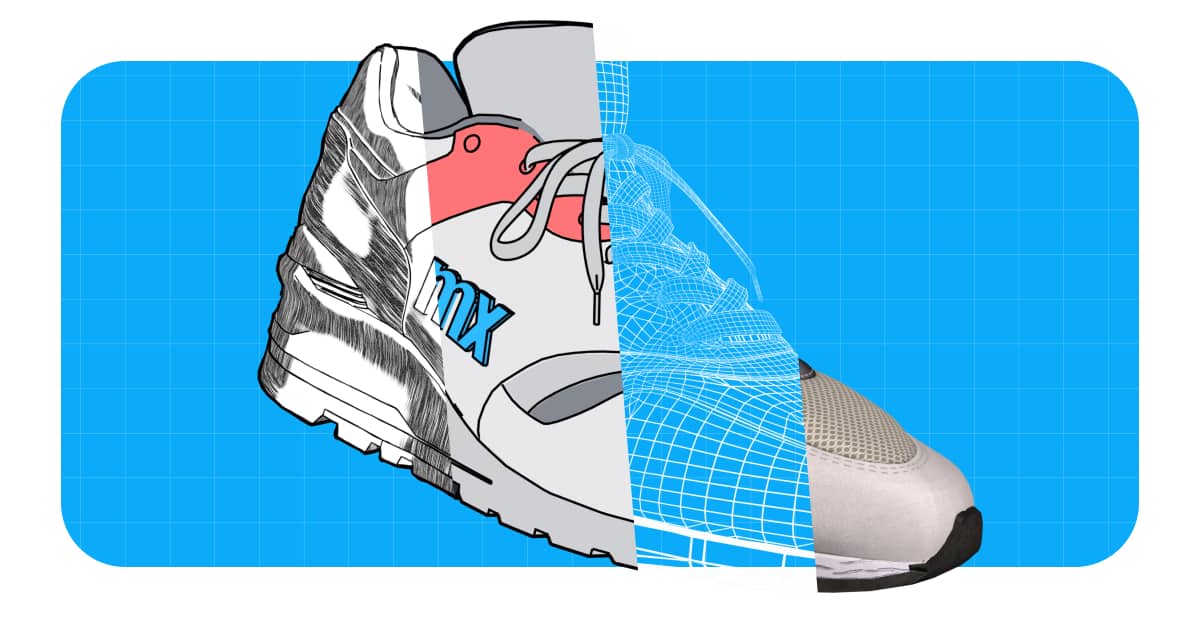The Benefits of Streamlined and Modernized Product Lifecycle Management

What differentiates good product design from great product design? Great products emerge from a creation process that prioritizes inspiration, creativity, vision, and perseverance. A great product captures the desires and needs of customers while serving a specific business purpose. In this blog post, we discuss digital solutions that can assist a designer along the journey to create a great product.
We spoke with experts at technology solutions company and Mendix partner, CLEVR, about product life cycle management (PLM) and the tricks of the trade to bring great products to market.
What is PLM?
Gartner defines Product Life Cycle Management or “PLM” as a “philosophy, process and discipline supported by software for managing products through the stages of their life cycles, from concept through retirement.”
“PLM has been subject to the regular hype cycle for many years,” said Camilo Gaviria, Chief Solutions Officer at CLEVR. He notes it began as an “engineering-driven discipline” at companies like Airbus, Boeing, and Toyota. Which is to say, from the start it was “very much a process that was meant for purpose.”
How does PLM work?
A breakthrough in PLM occurred with the “advent of CAD taking a more predominant role in the manufacturing process and becoming more mainstream,” Gaviria said. Consequently, there became a “need for PLM to become a more central business process—within the operations of a business. A company is nothing else than the product or service it produces. If you’re really going to pursue your mission, your core concern should be how you build and what your product is. That is the core philosophy behind a true implementation of PLM, the digital twin.”
Nowadays, a company will “first design your product in digital,” Gaviria further explained. “You attach every single piece of information and data that you need to sell it, produce it, deliver it, and service it to the digital model. And you make your decisions based on that digital model as much as possible, such that when you finally buy that first part and start that first machine, you have absolute certainty of what you’re doing.” Still, he notes, the “core of what PLM is, should be and has been for the last 20 years, hasn’t changed that much. What’s changed is how people perceive it no longer as an engineering process, but rather as a business process that can drive business value.”
How PLM generates constructive feedback
The feedback process is central to PLM. “Exposing the actual product in its design to a broader audience of feedback—people who can actually provide constructive feedback to any of its stages—you’re actually socializing the manufacturing process and that makes it much more robust,” said Gaviria. “The role of Mendix is precisely making socialization—that linkage between the product and all the other systems that contain the other information and all the other interaction points with the users extremely easy— thus making it the adoption of PLM as a process easier as a whole.”
How low-code drives great PLM
Rene Tusveld, CLEVR’s director of product, also told us how low-code has been a revelation for their clients. “You can really tailor your solution to the needs of the customer,” he said.
Companies benefit from low-code solutions that can streamline processes and modernize core systems. Unburdened by time-consuming administrative tasks, a designer is free to focus on the creative part of their job: building an excellent product.
While there is no substitute for inspiration and creativity, streamlined and modernized product lifecycle management gives designers an edge and unlocks potential.
A product like Mendix DLM for Fashion and Retail, co-created by Mendix and CLEVR and now offered in the SAP store and available to AWS customers, allows companies to modernize their path from concept-to-commerce and elevate product design, merchandising, and supply chain organizations for faster time to market.
Mendix DLM offers unites the goals of different teams involved in the design of a product. “Fashion is designed by fashion designers,” said Gaviria, who notes how designers don’t normally begin their process by deciding what the thread material to use. Instead, he notes, a designer is probably “thinking whether it should be sky blue and shiny or dark and matte, because that’s the criteria that’s important in fashion design,”. “And the underlying IT system that supports that process needs to understand that that’s the important part. But still, it needs to cater for the fact that, for the guy in production, whether [the material] is nylon or wool, does make a difference. And that I think is where low-code, that ability to focus on what is important for a particular community or industry sub-segment or user base. That’s what makes the Mendix value proposition in the context of PLL invaluable if you ask me, because that’s where every other tool fails. They are all offering a standard templated approach to a business process, which is logic. It is software. It needs to be repeatable in one way or another. So we try to piggyback on that flexibility quite a lot.”

